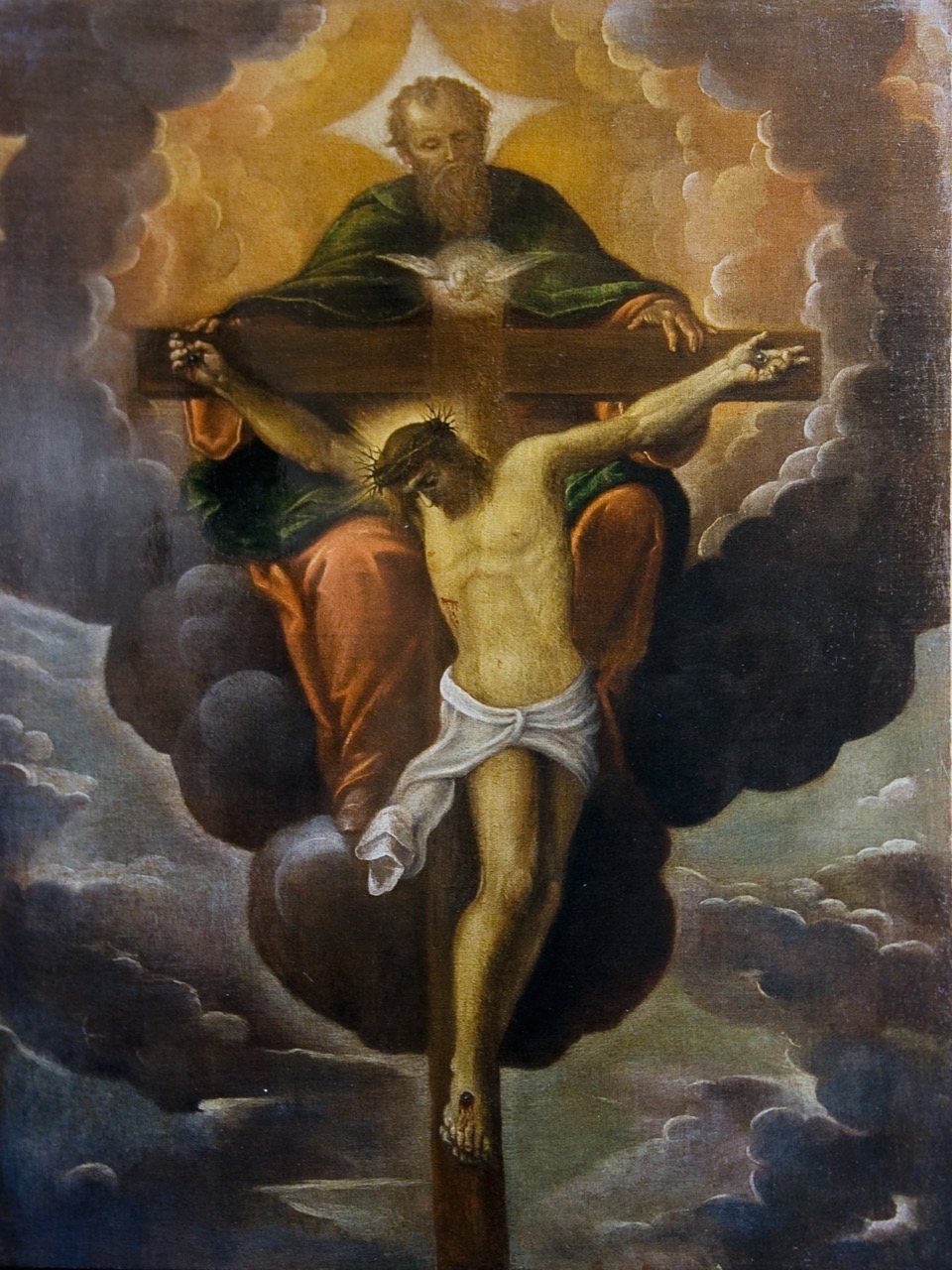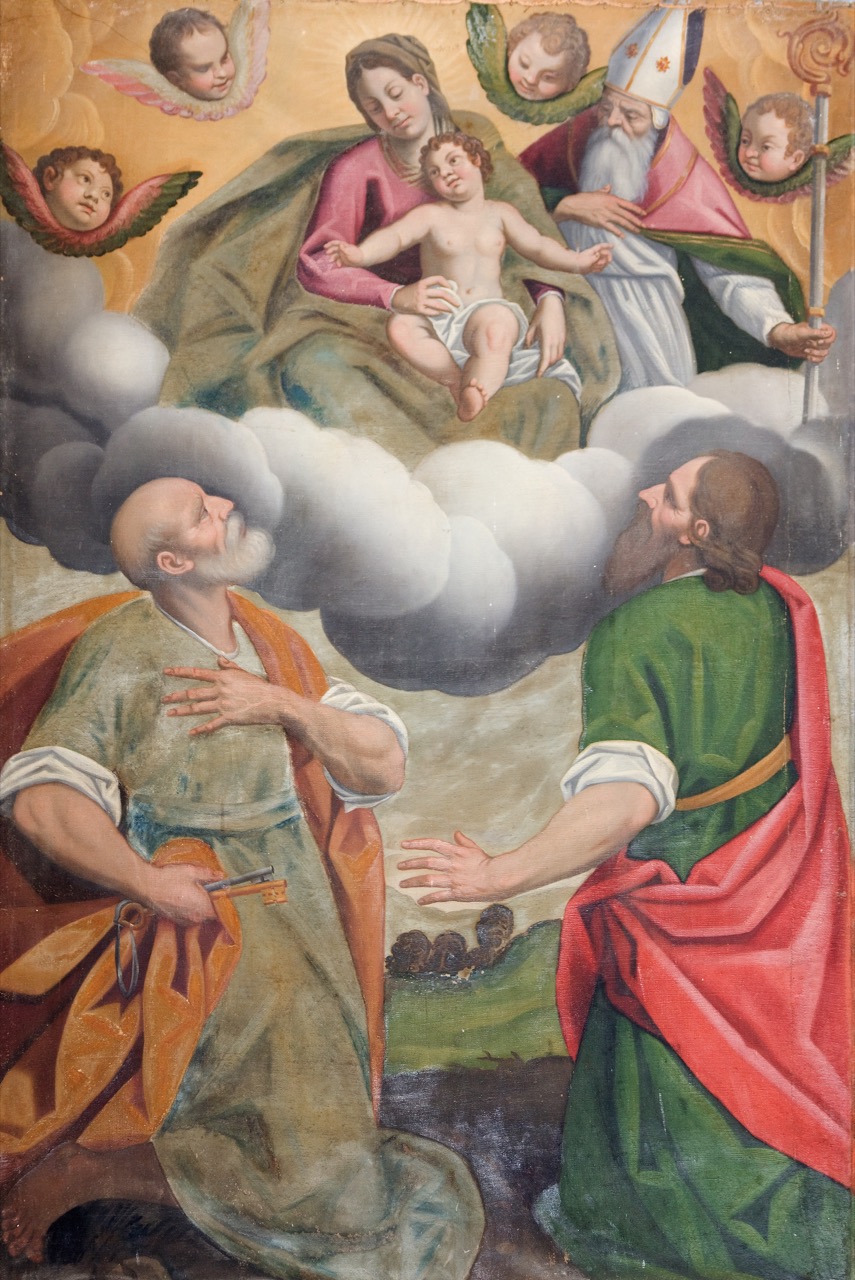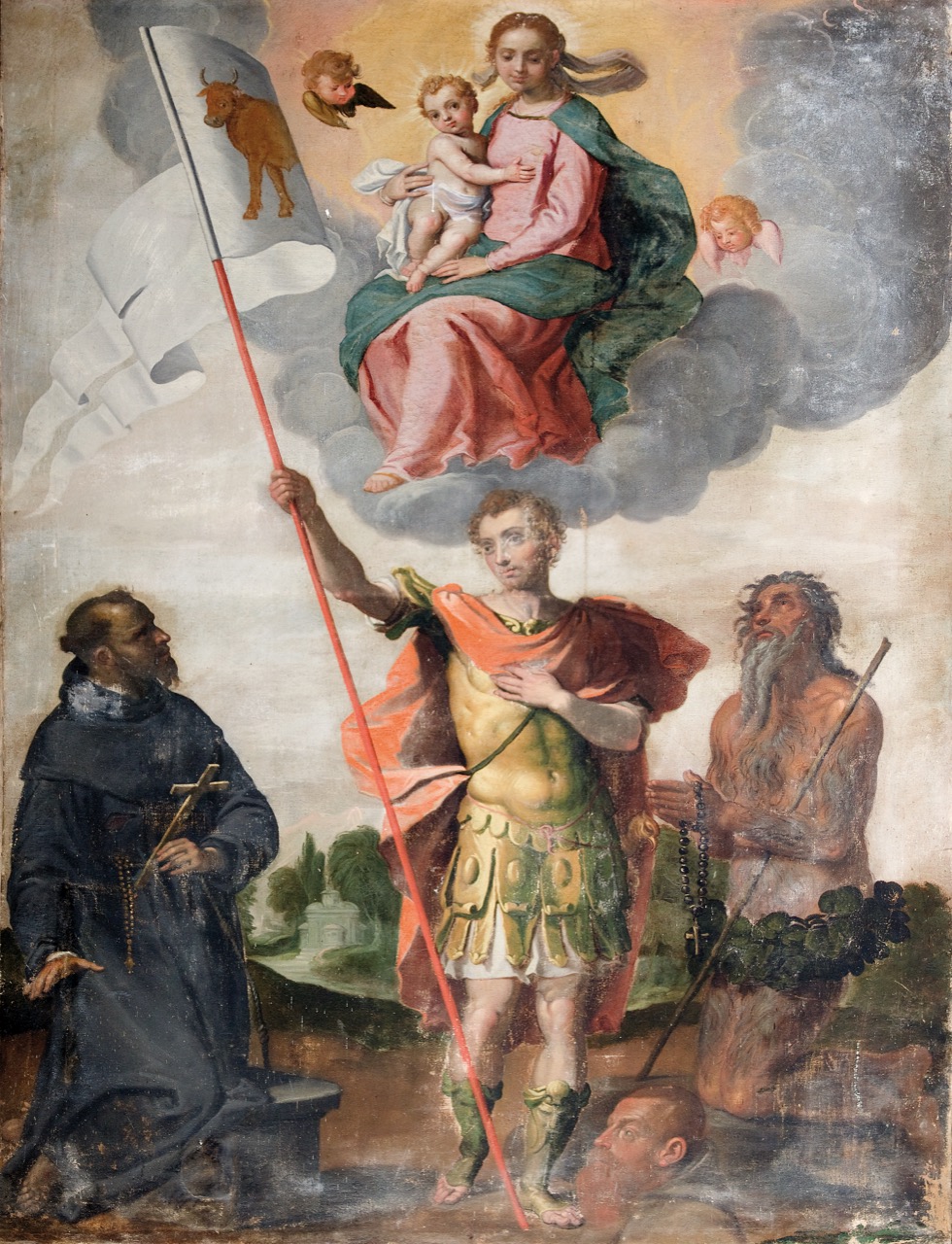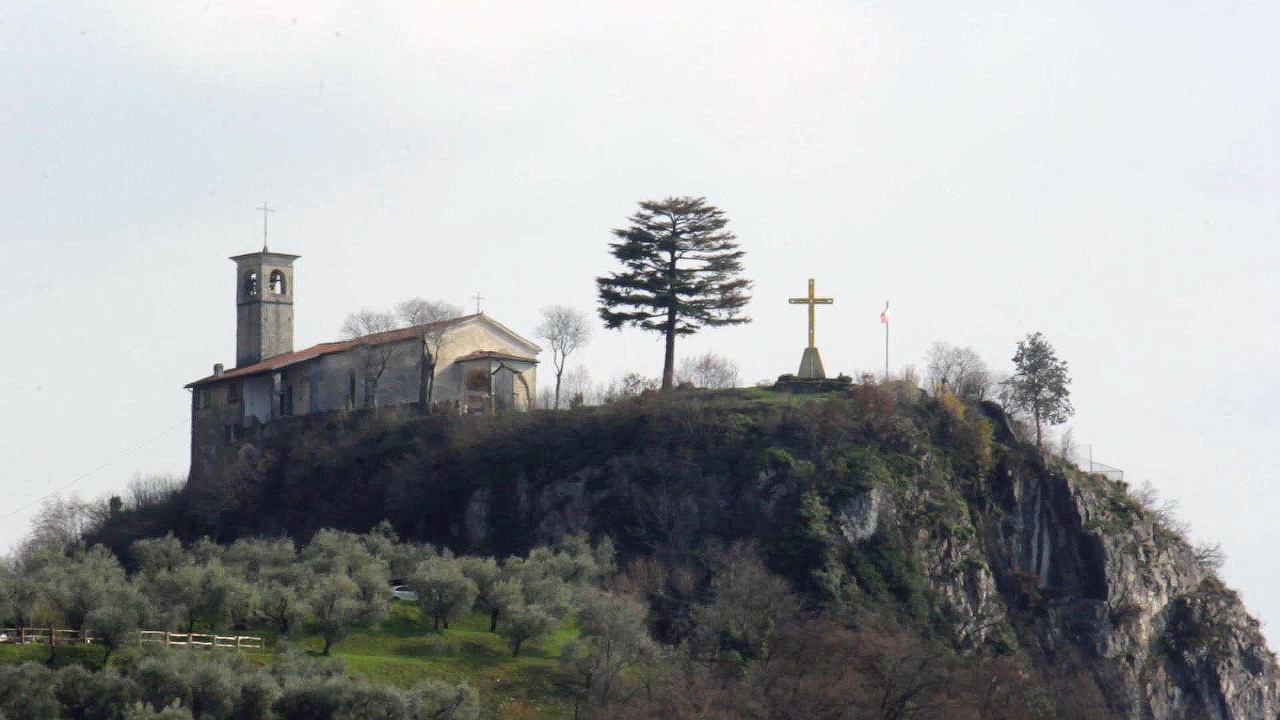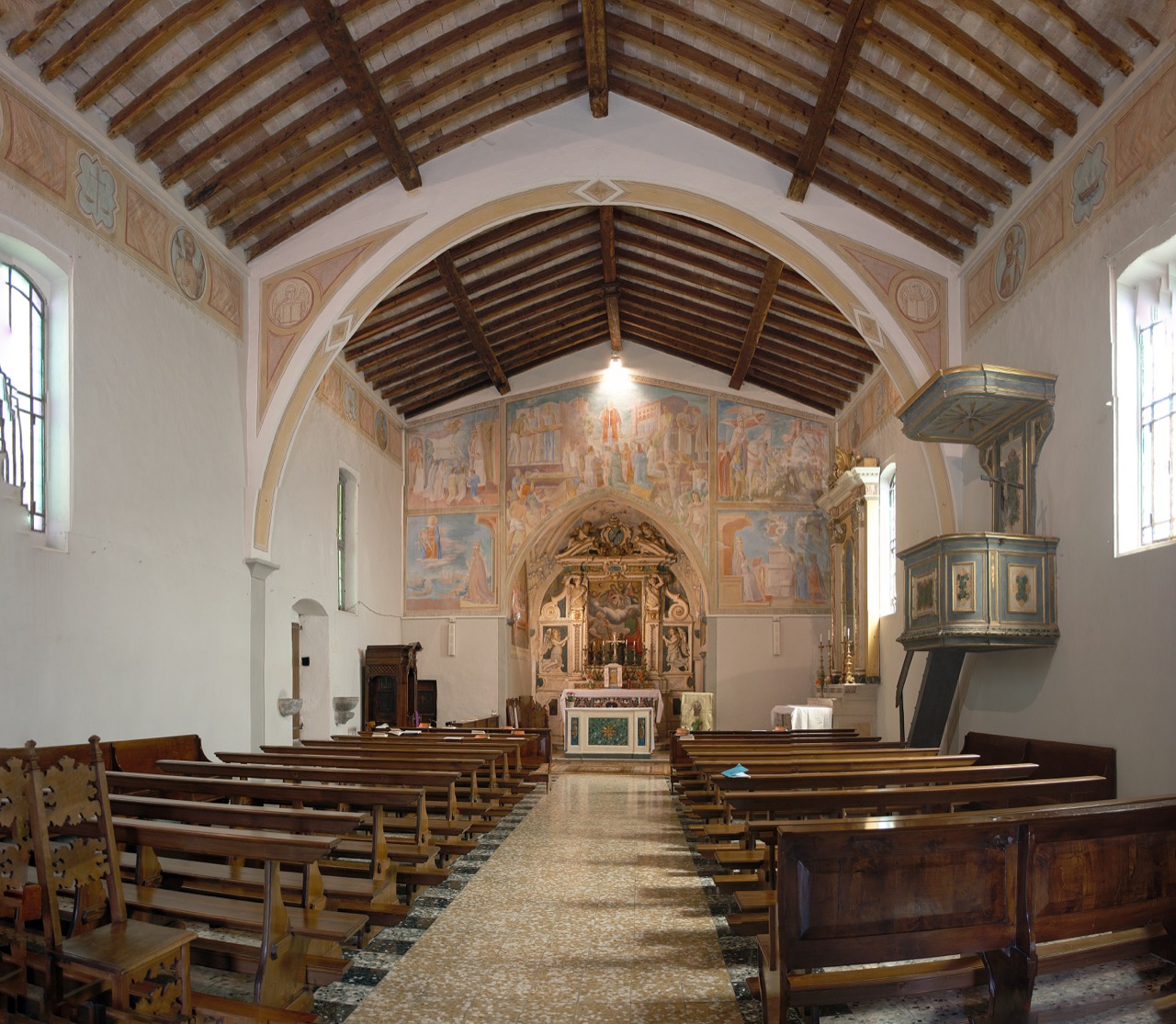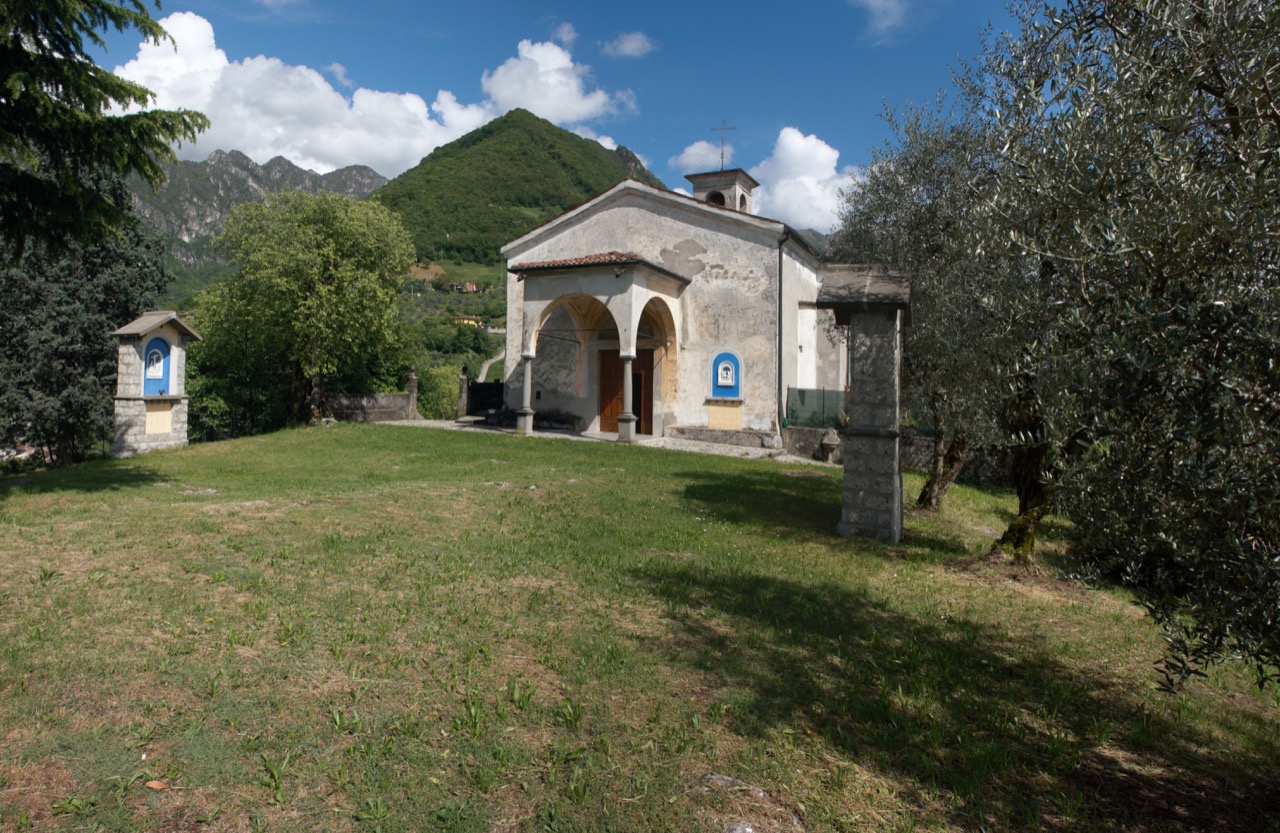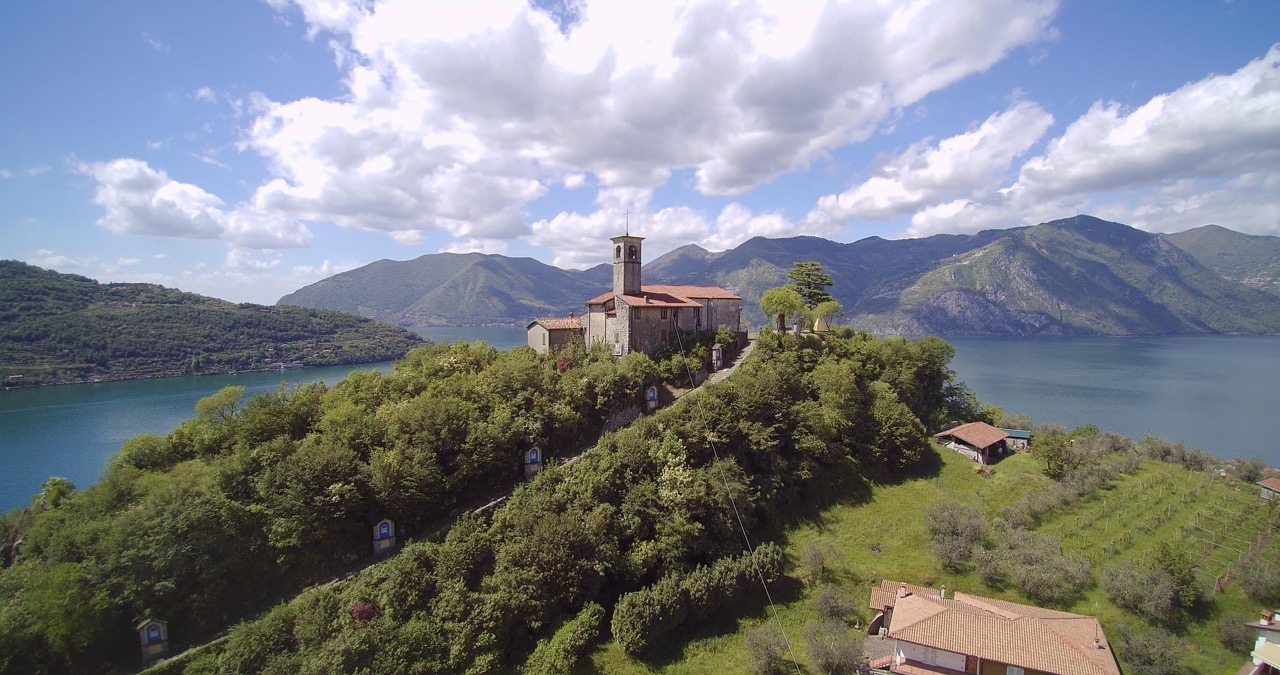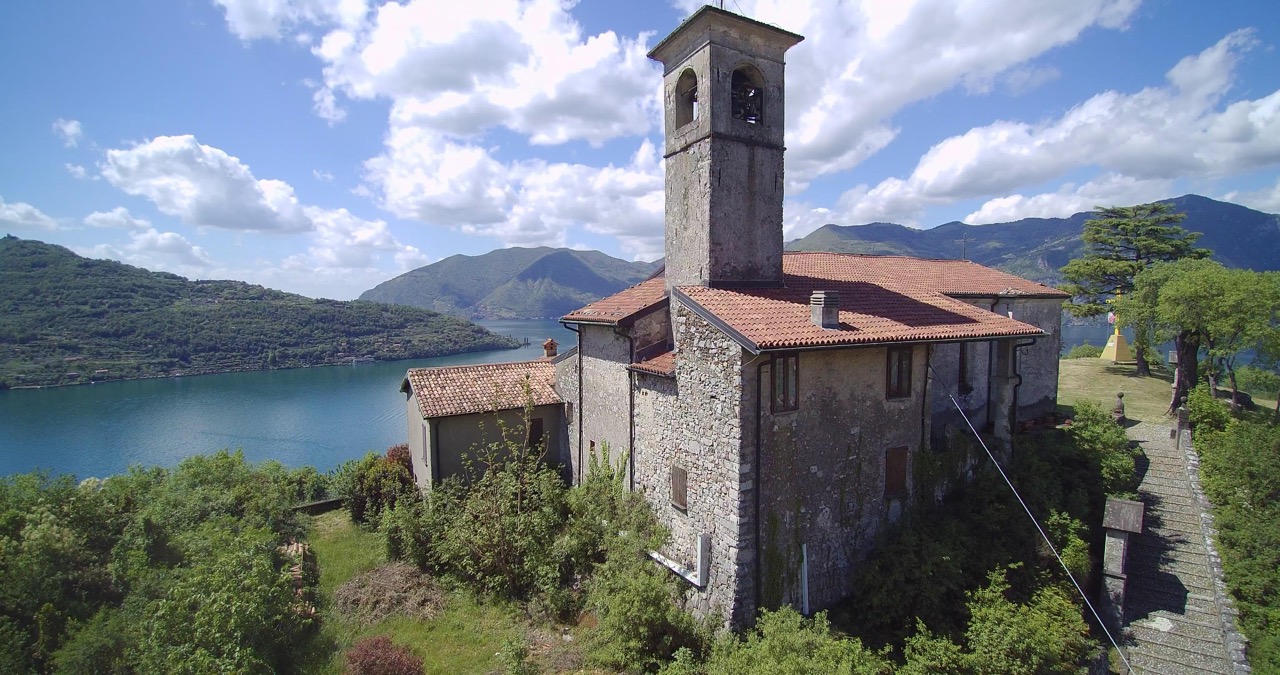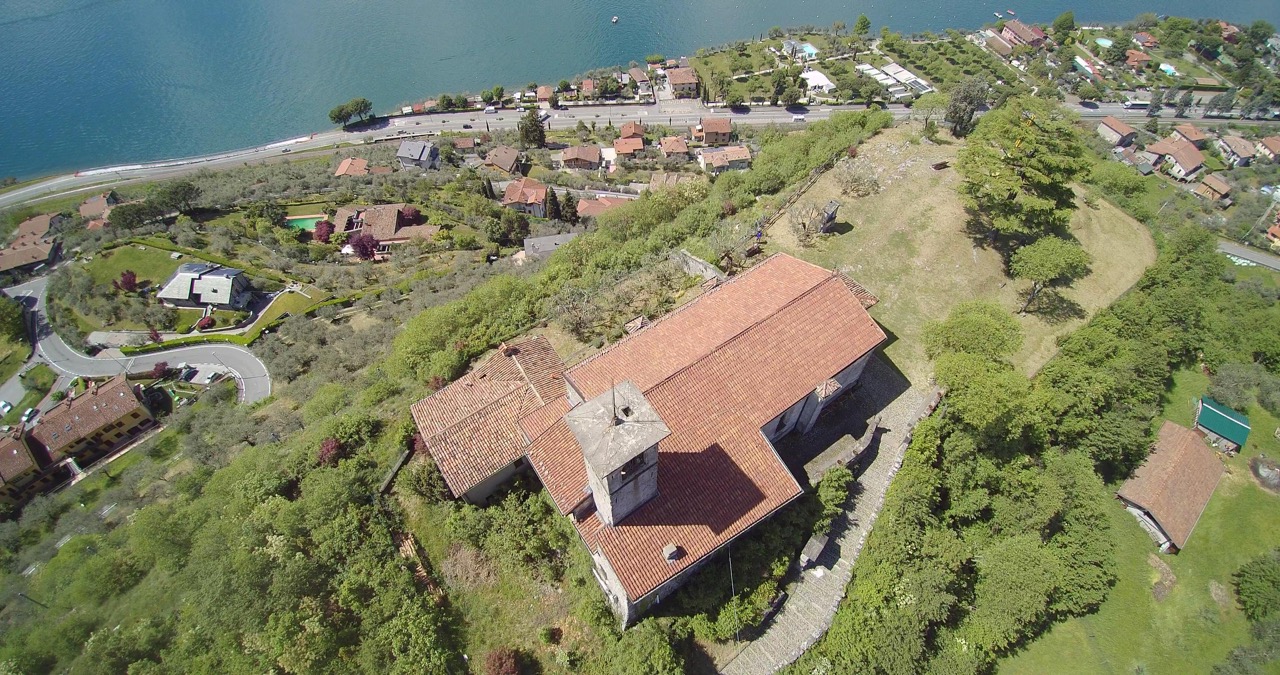Saints Peter and Paul Church – Pregasso
On March, 7th 1390 the bishop of Brescia (from 1388 to 1397) Tommaso Visconti confers to “Pietro da Lodi the vacant church of San Pietro di Pregasso with the title of rector with the faculty of celebrating the divine offices, baptizing and administering the other sacraments, granting him full authority”. At that time, the parish of Marone is therefore separated from the parish of Sale Marasino substantially and not only formally.
In 1567 the church of Saint Peter, known as the ancient parish church, “is abandoned and half-crumbled since not very distant another one was built by the Municipality and the Rector”, Giacomo Zatti.
In the records of the Bollani visit, it appears that the current church and the annexed house were under construction – “the church has been completed and the building is completed”: furthermore, “walls for other buildings”, a room for the rector and one for the hermit – and it is ordered that the old church “should be closed in such a way as to exclude access to the ruined parts”, but it is also indicated to restore it.
A note in the margin of the same document, written in 1578, shows that – both the rector of Marone, Giacomo Clerici, and the Municipality, in the person of the consul Antonio Ghitti – consider the restructuring impossible, so it had to be demolished, but that its ruins – and the economic resources that they wanted to use for the restoration – will contribute to the construction of the new one.
Briefly, the construction of the present church of Saints Peter and Paul began around 1578, using part of the ruins of the previous church; for a few years on the hill of San Pietro there were two churches, the ruined one and the one under construction, for which the ancient stones were used.
For over twenty years only the bell tower of the ancient church remained, located away from the new church: the works for the new bell tower began after 1599 and ended in 1605, as attested by pastoral visits and an inscription.
In the current church, the entrance portal has a rectangular invoice and above a frescoed lunette with a scene with Christ who saves Peter from the waters is placed ; the fresco is signed by Casari, from 1946, perhaps it is a heavy repainting of a previous seventeenth-century fresco.
The interior has a single nave. The ceiling presents the wooden beams of the original structure, recovered after an important restoration operation.
Along the right wall there are two altars, one in scagliola and the other one of recent invoice, with recesses – whose structure is clearly visible also outside – respectively with the wooden statues of San Fermo and the Virgin with the Child, this last work of 1930 by a sculptor from Val Gardena. Between the two altars there is an eighteenth-century wooden pulpit.
On the counter-façade there is the painting of San Filippo Neri in front of the altar of an anonymous artist.
At the end of the nave a pointed arch introduces the apse area: the above wall is decorated with a series of frescoes, divided by painted frames, which narrate the significant episodes of some of the popes who have most influenced the history of Christianity.
The year of realization is 1946 and the authors are G. Casari and E. Piroli from Cremona.
The wall at the bottom of the apse hosts the altarpiece, with the Virgin among the angels, St. Martin bishop and Saints Peter and Paul, by Francesco Giugno.
On the left wall we can observe the Trinity in the glory of an anonymous artist of the first half of the seventeenth century (Ottavio Amigoni?) And The Virgin with the Child in glory, the saints Francesco, Fermo, Onofrio and the donor Antonio Gandino.
The presence of the so-called Sepulcher needs also to be highlighted, on the south side facing the small garden that leads to the ancient parish house, decorated with a small portico held by stone columns of Sarnico, concluded by capitals that recall stylized leaves.
Inside there is the wooden group of the Pietà, of exquisite workmanship, formed by the Virgin, a pious
woman (perhaps Mary of Cleophas) and the dead Christ.
The church of Saints Peter and Paul of Pregasso:
history, art and tradition
edited by Roberto Predali
The authors and the editor thank for the contribution:
Renato Benedetti, Don Alfio Bordiga, Denise Pilatti, Uber Galli, Antonietta Guerini, Domenico Guerini, Maria Grazia Guerini, Luisa Guerini, Luca Mor, Giambattista Pezzotti, Amedeo Rosa, Romeo Seccamani and Giulia Zanotti.
The images of the essays by Daniele Vezzoli and Angelo Valsecchi are owned by the authors.
The images of the cards by Giampietro Costa and Ettore Turra are owned by the authors.
The images of the cards by Angela Faccoli and Cristian Zanotti are owned by the authors.

